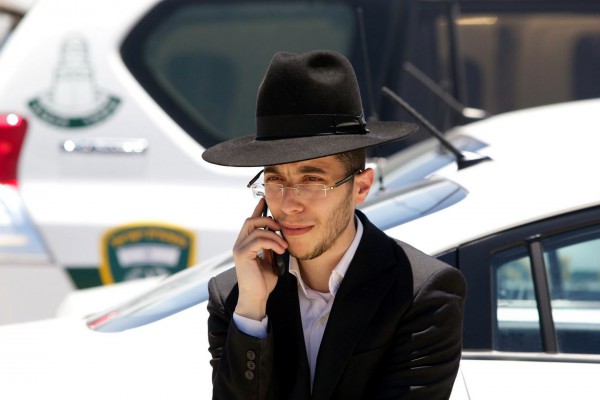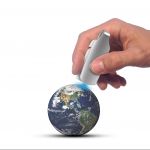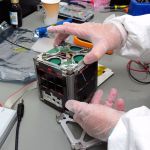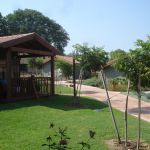“The foreigner residing among you must be treated as your native-born. Love them as yourself, for you were foreigners in Egypt. I am the Lord your God.” (Leviticus 19:34)
Professor Hossam Haick of Israel’s Technion in Haifa will soon see his cancer sniffing NaNose breathalyzer technology called SniffPhone installed in mobile phones.
The device uses a micro-sized smell-sensitive sensor installed as an add-on on smart phones that combined with uniquely designed software is able to actually “smell” cancer and other serious diseases on a user’s breath.
The smell-sensitive sensor can detect the “odor” emitted by cancer cells, as well as determine if the individual has a tumor and even whether or not it is malignant or benign says the developer.
“Current cancer diagnosis techniques are ineffective and impractical,” says Professor Haick, adding that his NaNose nanotechnology can “facilitate faster therapeutic intervention, replacing expensive and time-consuming clinical follow-up that would eventually lead to the same intervention.” (Times of Israel)

The technology surrounding cellphones has grown to such a degree that they can now aid in the diagnosis of cancer.
Research completed by Haick has shown that his cancer-sensing system has a phenomenal 90% success rate. This is especially important for detecting lung cancer early, one of the most difficult cancers to detect before symptoms arise, which will increase the chance of recovery from 15% to 70%.
By using the system in a mobile platform, it is now possible to use this NaNose technology more efficiently in any setting, even in rural areas of developing countries where the more sophisticated testing equipment does not exist.
In a statement released by the group, Haick said, “The SniffPhone is a winning solution. It will be made tinier and cheaper than disease detection solutions currently, consume little power, and most importantly, it will enable immediate and early diagnosis that is both accurate and non-invasive. Early diagnosis can save lives, particularly in life-threatening diseases such as cancer.” (Mobile Health News)
The SniffPhone is only one of the many devices that are becoming available for what health personnel call point-of-care diagnostics, where diseases are caught in their early stages with accessible, easy to use systems.

Group of young Arab men stand inside the New Gate on Bab El-Jadid Street in Jerusalem, while studying for their final graduation exams.
The professor is a good example of the blatant untruth of the claims that Israel is an apartheid state, since he is a Christian Arab born in Nazareth and educated in Israel. He also gives online lectures on nanotechnology both in Arabic and English.
The 39-year-old professor describes the skepticism he faced from some of his students saying, “Many people thought there was no chance an Arabic scientist could be teaching an Arabic course in a Jewish university, and many suspected I was a Jew pretending to be an Arab.” (Israel Seen)
He studied at Ben-Gurion University of the Negev, where he received his BA in chemistry, the Technion, where he was awarded a PhD in chemical engineering, and Israel’s famous Weitzman Institute, where he did postdoctoral work in molecular electronics, a futuristic field that studies how molecules can serve as transistors in electronic appliances and computers. (HaAretz)
Professor Haick has been selected for the “Ten Most Promising Young Israeli Scientists” of Calcalist and has received the prestigious “Yanai Prize for Academic Excellence,” which is given for exceptional and significant contribution in teaching and academic education. (Technion)
He produced his device while working as a part of a consortium that includes universities and research groups from Germany, Latvia, Austria, Finland, and Ireland, as well as the corporations Siemens and NanoVation-GS in Israel.
The project is funded by a $6.8 million grant from the European Commission.
















